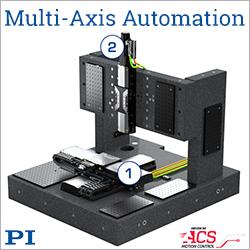Robot Hype vs. Real Risk: Is Your Business Truly Ready for Autonomous Food Delivery?
Autonomous delivery robots (ADRs) are experiencing explosive growth. These interesting bots are moving beyond simple, fixed routes to embrace real-time decision-making alongside people and vehicles. Unsurprisingly, this technological leap promises operational efficiency. However, for every benefit, a complex, hidden risk emerges. The core tension is clear: excitement must yield to scrutiny. This post moves businesses past the novelty of robot adoption and into the necessary preparation phase of risk mitigation and compliance review. It's time to build a solid foundation before the next bot rolls out.
The Hidden Risks of Autonomous Freedom
The freedom granted to ADRs to operate seamlessly in public environments introduces a profound shift in risk exposure. Primarily, it moves the burden of fault away from the traditional model of human negligence. If a bot is at the steering wheel, per se, how can we blame the humans?
The crucial tension lies in product liability versus operational error. Traditional commercial general liability (CGL) policies are structured to cover operational negligence—an injury caused by a human driver’s mistake. When an incident occurs autonomously, the liability often shifts dramatically up the supply chain. Fault can blur between the fleet operator, the software developer, or the hardware manufacturer.
Operational Risk
System malfunctions, such as sensor failure in low light or an unexpected, non-compliant sudden stop due to AI processing lag, bypass human oversight entirely. Insurers must now address the risks of mechanical and software failure in real-world scenarios. Furthermore, when these exposed assets face vandalism and theft on public sidewalks, businesses suffer asset loss and face potential third-party liability if the intervening public (e.g., a curious child or an attempted thief) is injured during the incident.
Cyber Risk
Beyond physical damage, ADRs pose significant data and cybersecurity exposure. These robots are vast collectors of proprietary and sensitive information, recording pedestrian movements, traffic patterns, and personal delivery habits. This dense data profile makes them prime targets for hacking.
The risk is twofold: a breach can expose sensitive user information, requiring comprehensive cyber liability coverage often absent in standard commercial policies; or worse, an attacker could compromise the robot’s control systems, weaponizing the asset itself.
Regulatory Risk
Finally, the accessibility and public interaction factor creates a critical regulatory risk. When operating alongside vulnerable populations—including children, the elderly, or wheelchair users—ADRs can create dangerous obstructions, leading to immediate public relations crises. Many cities have already moved to restrict or ban bots based on such accessibility concerns. Risk management must therefore anticipate these human factors, mitigating not just physical harm, but the severe financial and regulatory penalties that follow high-profile public incidents.
Navigating the Evolving Compliance Maze
A primary obstacle for scaling autonomous delivery is the fractured regulatory landscape, often termed "The Patchwork Problem." ADRs do not fit neatly into existing legal categories—they are not motor vehicles, motorcycles, or traditional pedestrians—leaving cities and states to create ad hoc rules.
This has resulted in dramatically varying regulations: San Francisco might impose a strict ban or restriction, while a neighboring state implements full statewide preemption. Businesses must contend with localized variances in speed limits, hours of operation, maximum weight restrictions, and explicit sidewalk usage rules, turning multi-state operation into a legal and logistical nightmare.
Keys to Proactive Compliance
Proactive compliance is essential; businesses cannot wait for unified federal guidance. The key is to shift from reactive compliance to proactive engagement. This involves continuously monitoring municipal pilot programs and engaging with local "emerging technology working groups" to anticipate regulatory direction.
Furthermore, fleet owners must treat comprehensive permitting and licensing as mandatory costs of scaling. This strategy ensures robots carry appropriate identification before deployment in any new area.
Lastly, operational fleets must demonstrate robust real-time monitoring capabilities. This approach proves they can remotely supervise and instantly assume manual control of a robot upon detecting a technical failure or a violation of local ordinances, thereby mitigating both regulatory and liability exposure.
The Critical Risk Mitigation Check-Up
For businesses scaling ADR operations, the most pressing financial concern is identifying solutions to mitigate the risks mentioned above. Plus, most fleet owners strive to make ADRs successful in the real world, while protecting the very humans they’re serving. But how?
For starters, business leaders overseeing ADR fleets must fully understand their insurance policies. What’s genuinely covered? What’s not? While this might not be the most exciting task, consumers bank on your completing this task.
It’s vital to know that standard general liability and commercial auto policies were underwritten for human-centric negligence, not autonomous decision-making software. That’s a massive distinction! In that same vein, many fleet owners overlook that they’re operating a sophisticated “product” in a public domain. System failures often result in product liability lawsuits—regardless of whether the operator or the manufacturer is found liable.
Knowing these nuances, it’s vital for businesses to get covered before scaling. We’re talking about securing last-mile delivery, property, and cyber liability insurance policies—the policies that would respond in such situations.
Remember, the traditional approach isn’t going to cut it this time. The traditional fixed-annual-premium model based on historical, human-driven data is obsolete. We’re charting new waters, so seeking adaptive insurance solutions only makes sense. Forward-thinking carriers are offering policies that utilize real-time operational data, allowing coverage to scale with usage and offering premiums based on measurable, adaptive risk models. It’s vital to advocate for what your business genuinely needs.
Moving Forward with Clear Vision
Autonomous delivery is inevitable, but long-term profitability and stability hinge entirely on preparedness, not just performance metrics. A company is truly ready to scale only when it has fully defined its liability framework, established clear regulatory compliance paths across all operating jurisdictions, and tailored its insurance portfolio with specialized coverages.
The principle is simple: the cost of proactive risk mitigation is always significantly lower than the cost of a major incident, a crippling lawsuit, or a regulatory ban. The actionable next step for any scaling operation is to immediately engage a micromobility risk specialist. This audit should evaluate both the technology stack and operational boundaries before moving past the pilot stage.
 Lori Cartwright is a seasoned leader with over three decades of experience in the risk management industry. As the Traditional Practice Lead and Client Experience Leader, she excels in Workers' Compensation and HNOA, providing strategic guidance to diverse sectors like micromobility, advanced manufacturing, and e-commerce. With a background that includes key roles at Lockton Companies and Willis Tower Watson, Lori is also a dedicated mentor committed to empowering the next generation of industry leaders.
Lori Cartwright is a seasoned leader with over three decades of experience in the risk management industry. As the Traditional Practice Lead and Client Experience Leader, she excels in Workers' Compensation and HNOA, providing strategic guidance to diverse sectors like micromobility, advanced manufacturing, and e-commerce. With a background that includes key roles at Lockton Companies and Willis Tower Watson, Lori is also a dedicated mentor committed to empowering the next generation of industry leaders.
Featured Product

